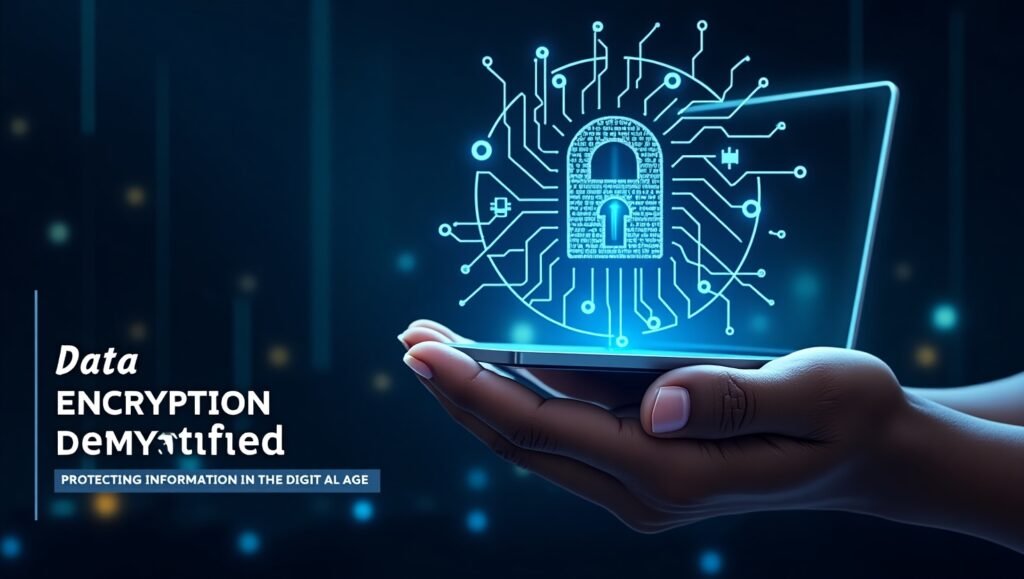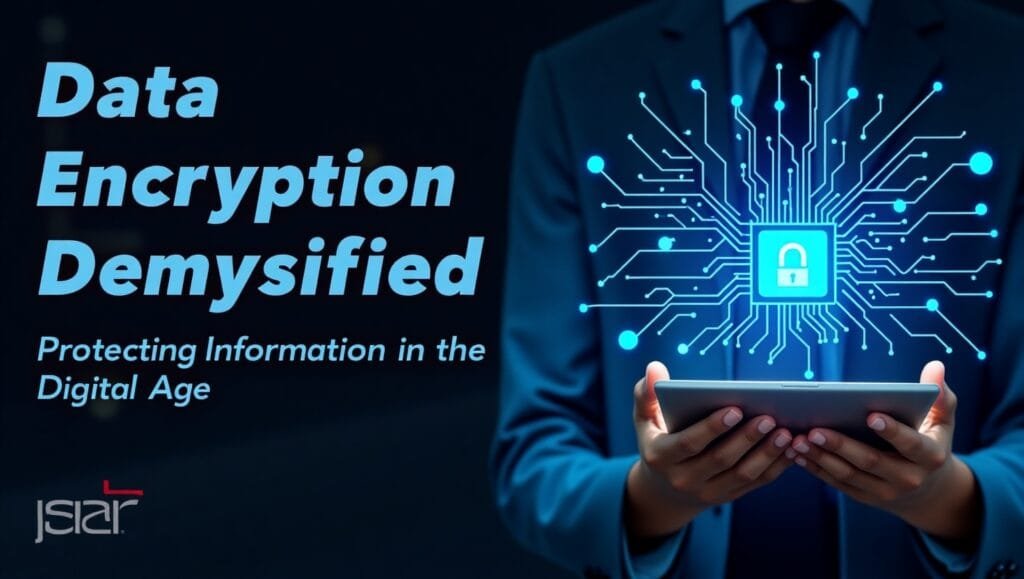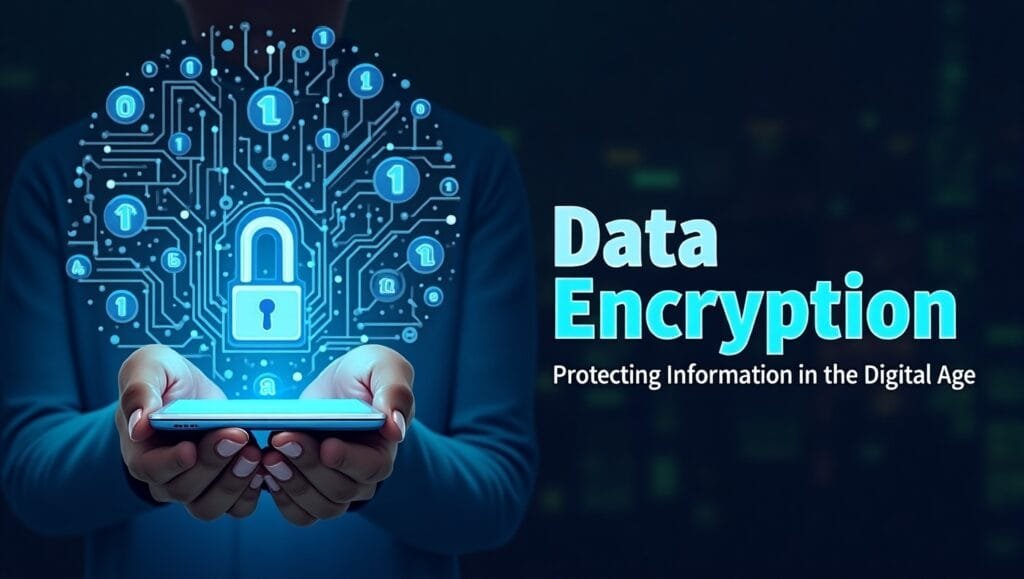Data breach and cyber threat have become more common, so to protect sensitive information, it is paramount. One of the most important aspects of cybersecurity pertains to data encryption, which serves to keep the information confidential and protected from unauthorized parties. In this article I will talk about that data encryption is necessary for what purpose, how it works, for what it is used, and I will answer some questions about this topic.
Understanding Data Encryption
Data encryption is the act of converting plaintext into ciphertext, which can neither be read nor understood. That means that if only people equipped with the right decryption key can access and decrypt data. Cryptography is the ratio of science for encryption and decryption. Data encryption is just one of the methods used to protect users’ digital data confidentiality, either it is stored on the computer systems or transferred over the networks.

Types of Data Encryption
There are two types of encryption methodologies broadly viewed — symmetric and asymmetric encryption.
Types: Symmetric Encryption Uses a single key for encryption and for decryption. For this, the sender and the recipient must have the same key and for that there must be a secure way to exchange the keys. Symmetric encryption provides much faster encryption and suits better to encrypt large volumes of data, but the issue is how to securely distribute the key to all the parties.
The second type is asymmetric encryption, otherwise called public key encryption where it uses two keys, a public key for encryption and private key for decryption. The private key should not be disclosed to anyone else, and the public key should be able to be shared. This method is more secure as it is done without the exchange of key, but it is also computationally expensive and is less efficient when encrypting very large datasets.
Common Encryption Algorithms
To achieve these methodologies, several encryption algorithms have been developed with their strengths and use cases.
Symmetric Encryption Algorithm: Advanced Encryption Standard (AES), Extremely robust and efficient applied in favor of widespread use. AES has key length of 128, 192, and 256 bits, and AES 256 is more secure.
Asymmetric encryption algorithm used for secure data transmission is Rivest Shamir Adleman (RSA). The basis for RSA security is on the fact that factoring large prime numbers is a computationally difficult problem compared to symmetric algorithms and is slower.
Symmetric block cipher, that is known for its speed and tightness. However, Blowfish is also adequate for communication links and file encryption, provided that the key does not have to be changed frequently.

Applications of Data Encryption
All of these elements of modern digital interactions incorporate data encryption:
Data At Rest: Encrypting a stored data make information accessible for a person who didn’t possess the decryption key even if physical devices such as hard drives or USB has been lost or stolen.
Encryption in Transit: This involves encrypting data found in transit across networks, such as email messages, instant messaging, online transactions, etc., so that it is protected from being intercepted and eavesdropped.
End – to – End Encryption (E2EE): It encrypts data on the sender’s device and keeps it encrypted during its passage till it is accepted by the recipient’s device. Signal and WhatsApp, among other apps, leverage E2EE to guarantee that the content can’t be read by anyone other than the communicating users, not even the service providers.
Challenges and Considerations
Encryption is a powerful tool for data protection, with its set of challenges.
The security of the encrypted data is dependent on the protection of the encryption keys. Proper key management practices are necessary to impede unauthorized access.
Encryption and decryption processes take up computing resources. Encryption, particularly software based, will come with some performance overhead, but modern CPUs with Advanced Encryption Standard instruction set effectively reduce impact.
Regulatory Compliance: Any number of different industries are required by regulation to use encryption to a minimum certain standard. Encryption practices of organizations need to be in sync with latest legal requirements.
Frequently Asked Questions (FAQs)
Q1a: The primary purpose is to store the data in encrypted format; therefore, any unauthorized internal or external party that gains unauthorized access to said data will only receive unintelligible strings or numbers.
Data encryption is primarily used to protect confidentiality of data, ie, to prevent unauthorized parties from having access to and interpreting the data.
Q2: Is data encrypted so it can be secure from all types of cyber threats?
Encryption keeps data in a safe place but is no antidote to cyber threat. For example, encrypted data is still at risk if the attacker obtains the decryption key, or if malware has impacted a system. This means that encryption should be an additional layer of defense to be part of a comprehensive security strategy.

Q3: Is there a performance consequence of using data encryption?
CPU system operations involving encryption can affect performance. But in the case of modern CPUs with Advanced Encryption Standard instruction sets, the impact on operations such as backups tends to be negligible.
Q.4: What are ended to end encryption and why it is needed.
The kind of encryption used on email is end-to-end encryption (E2EE) which means that data is encrypted on the sender’s device and remains encrypted as it is transmitted towards the recipient’s device. Because of this, no intermediary, such as a service provider can see your unencrypted data (which means that there is a chance of data breach or data theft).
Q5: What is the kind of effect doing the key management have on the security of the data encryption?
Secure encryption of data depends on effective key management. Poorly managed, lost or in the wrong hands, encryption keys negate the security of the encrypted data. It is therefore necessary to be prudent with key management practices.
Conclusion
Modern cybersecurity frameworks are indispensable the data encryption component.
